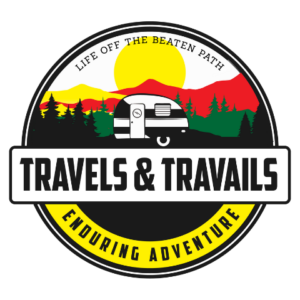
Joshua Tree is one of the most underrated National Parks in the system. Featuring the iconic Joshua Tree, this is one of the more visited national parks in the West. There are 500 park campsites inside the park. But is Joshua Tree good for camping?
Joshua Tree National Park is a great place to camp Fall through Spring. With high temperatures exceeding 100 degrees in July, Joshua Tree National Park is not a good place to camp in the summer as none of the campgrounds have electrical hookups. In fact, none of the campgrounds have any sort of hookups. However, two campgrounds in Joshua Tree NP have water and a sewer dump. Fall through Spring, Joshua Tree NP is a has many features and plenty of hiking trails for varied skill levels. The highlight of camping in Joshua Tree NP, beside access to many Joshua Trees, is the majestic rock formations. Many campgrounds in Joshua Tree NP have gigantic boulder formations right in the campground!
Read on to find out more reasons why you don’t want to miss camping in this park.
See More of the Park
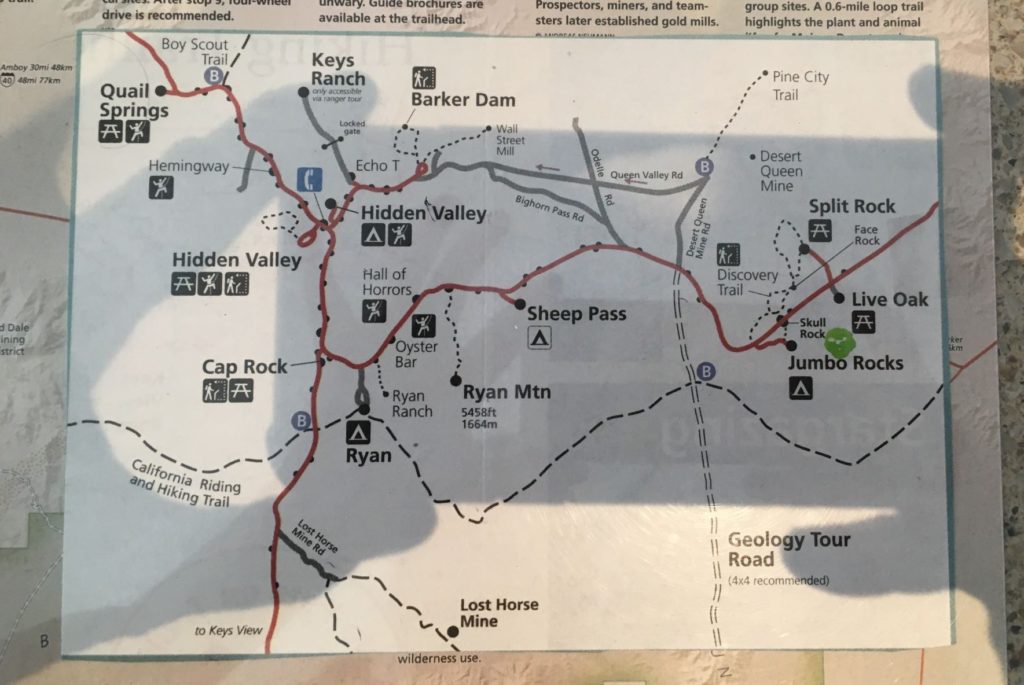
Some people make Joshua Tree National Park a day trip. Please don’t do this – you will miss out on so much. Camping in the park will give you time to see many of the attractions. The park is quite large at 800,000 acres, which is slightly larger than Yosemite National Park and slightly smaller than Glacier National Park. Could you imagine going to Yosemite National Park for one day? Me neither. So don’t make Joshua Tree a day trip; stay and camp.
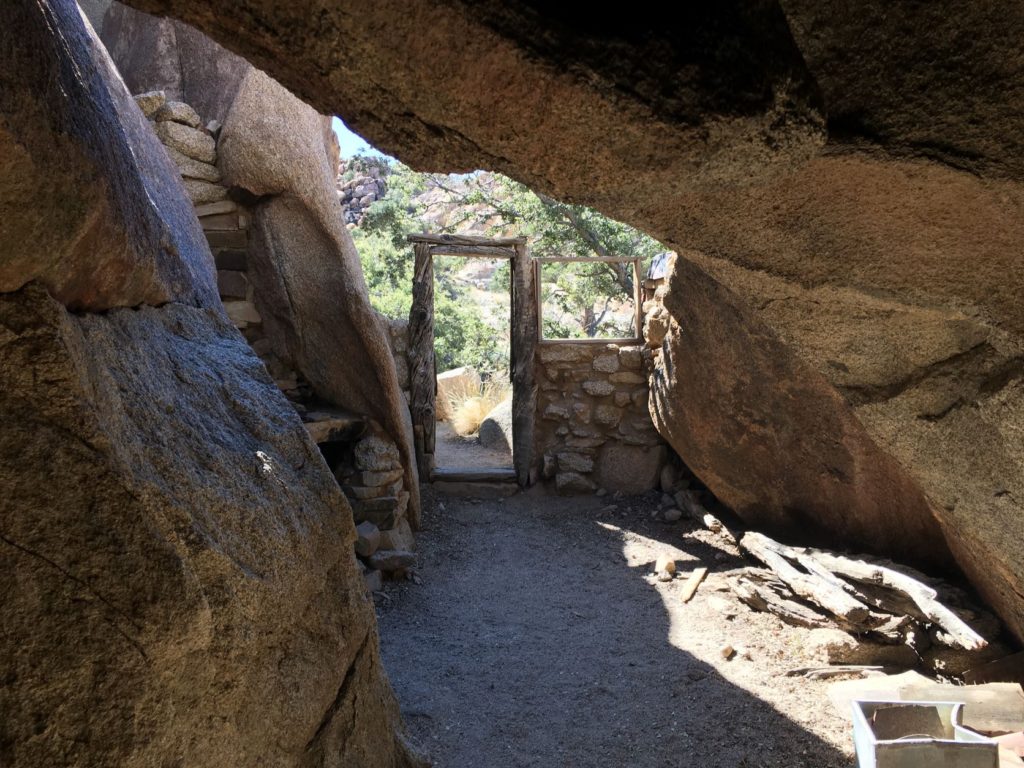
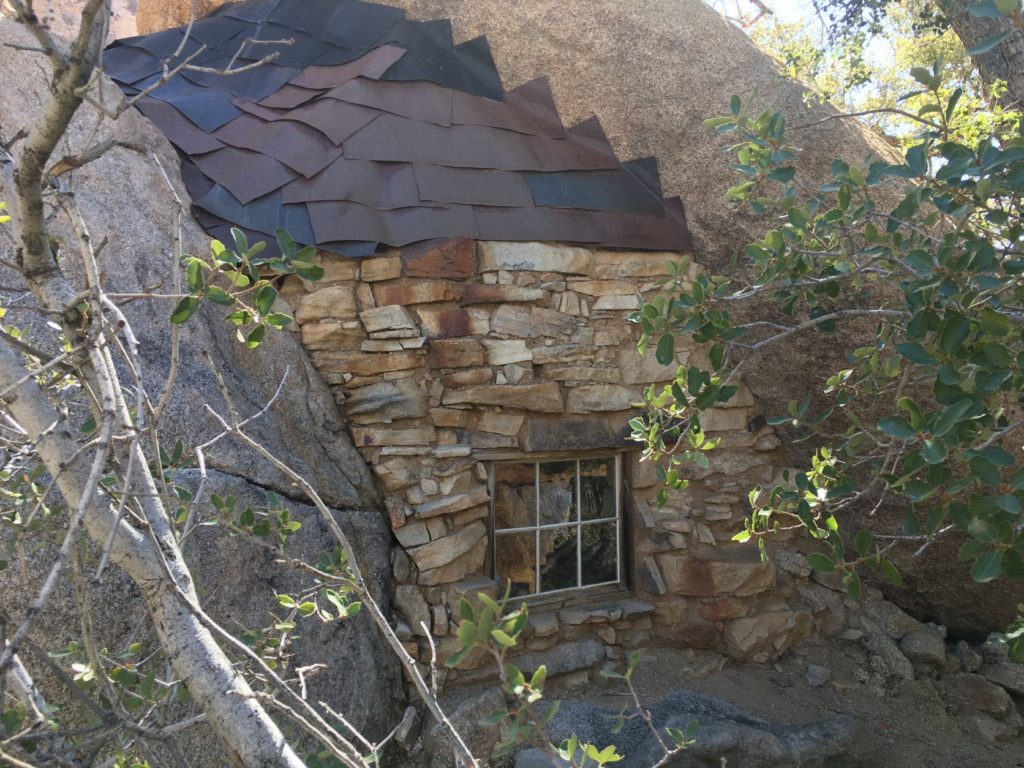
There are many things to see in Joshua Tree National Park. The park sports easy to challenging hikes to iconic and historical locations. One of our favorite hikes was to the Eagle Cliff Miner’s Cabin. This cabin was the dwelling place for miners who used an existing cave as a template for a home. It’s filled with old relics and there is a log where you can sign in to note that you have been there. The hike itself is lovely as it wanders through some beautiful flora and fauna. While th e hike is lovely, it is challenging and not easy to navigate. Even in spring and Fall, this area gets hot, so go early and bring plenty of water.
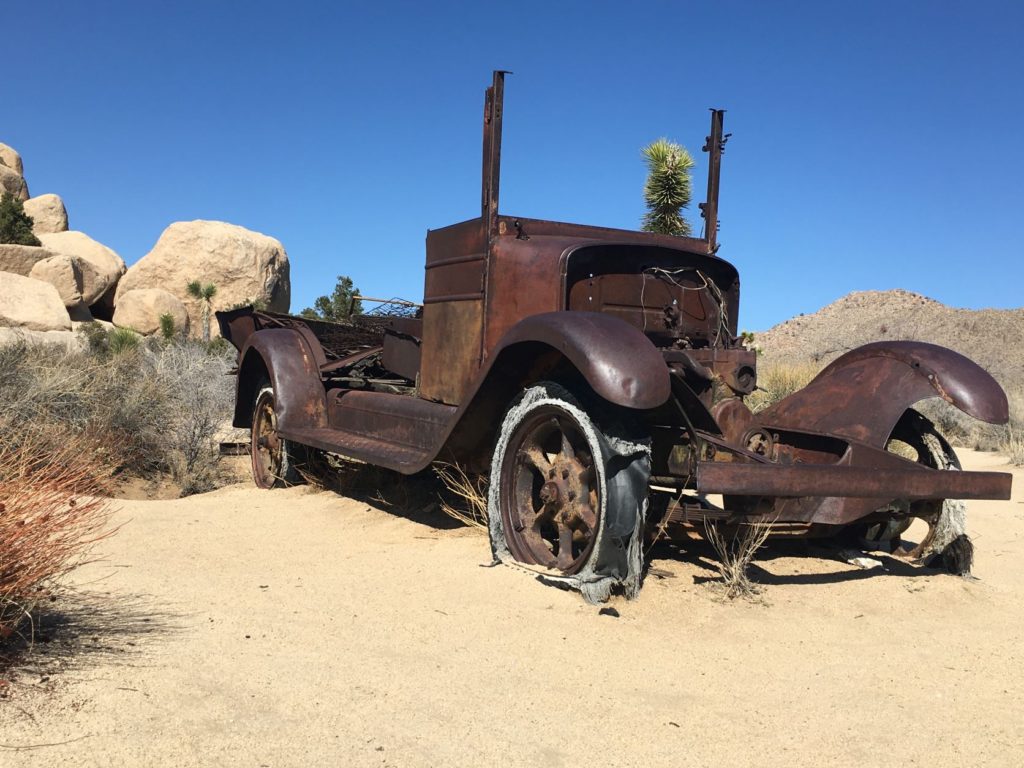
If you’re looking for an easy hike, try Wall Street Mill Trail. This is a nice, flat two-mile trail that takes you back into the 1930s and 1940s. The trail is a little sandy, but the sand is not difficult to walk on. You’ll see old cars along the way to your destination, the Wall Street Stamp Mill. Again, go early and bring plenty of water as afternoons get hot.
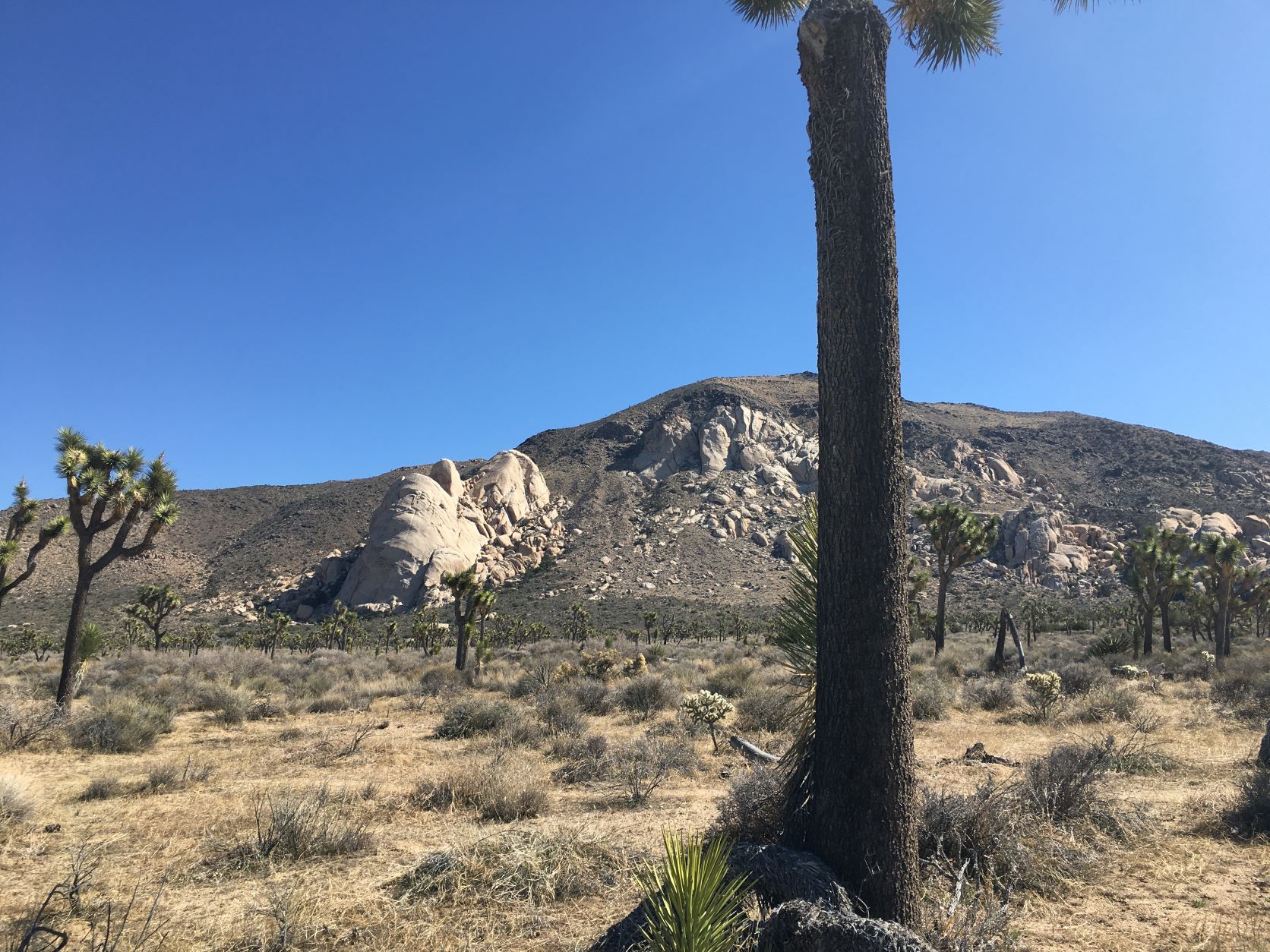

Into geology? There are many geological attractions in Joshua Tree National Park. Rock formations like Oyster Rock and Skull Rock are an easy drive – just park your car and walk. If you want to get photos, go early as these attractions get busy and people will block your view/photo opportunity.
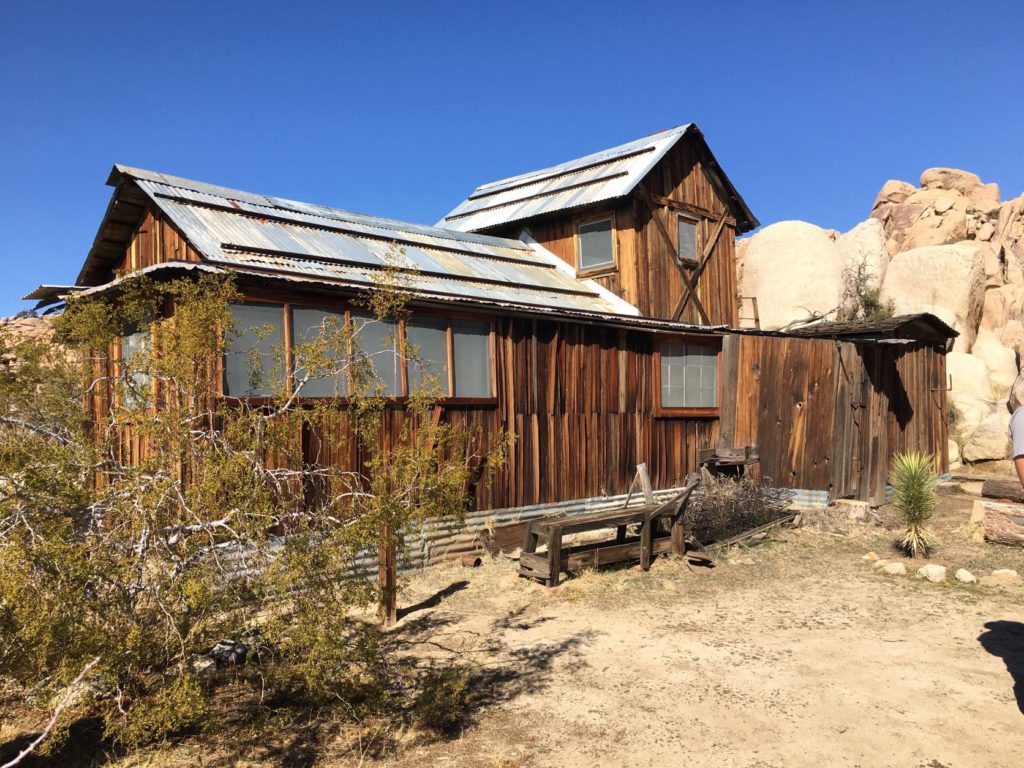
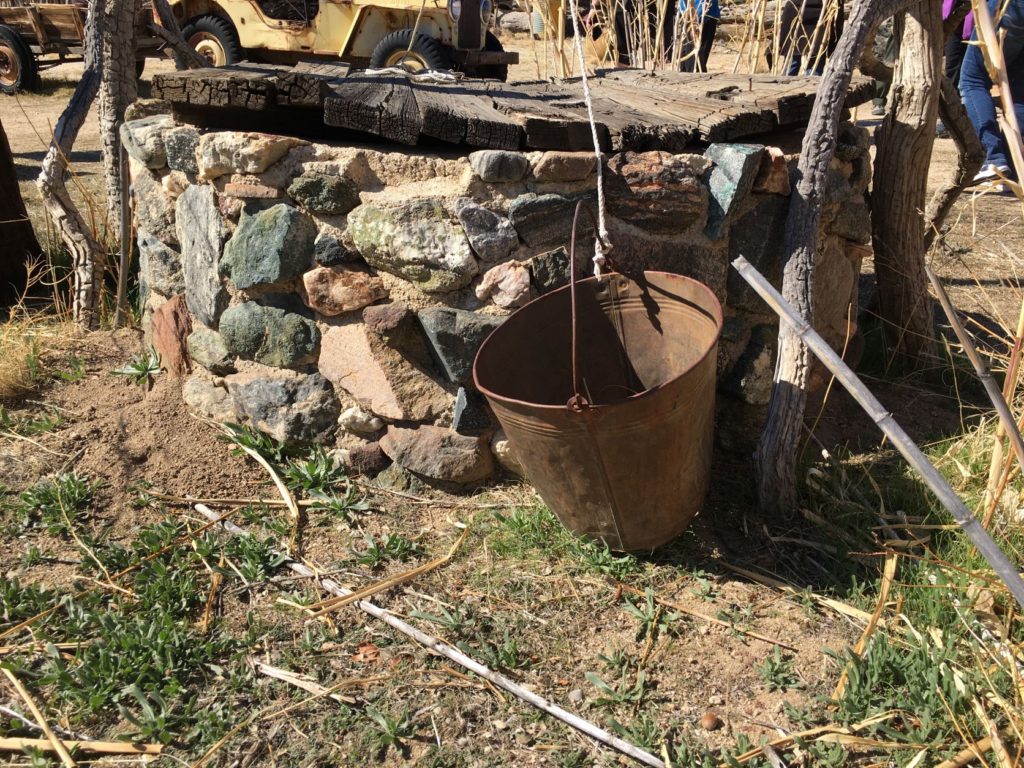
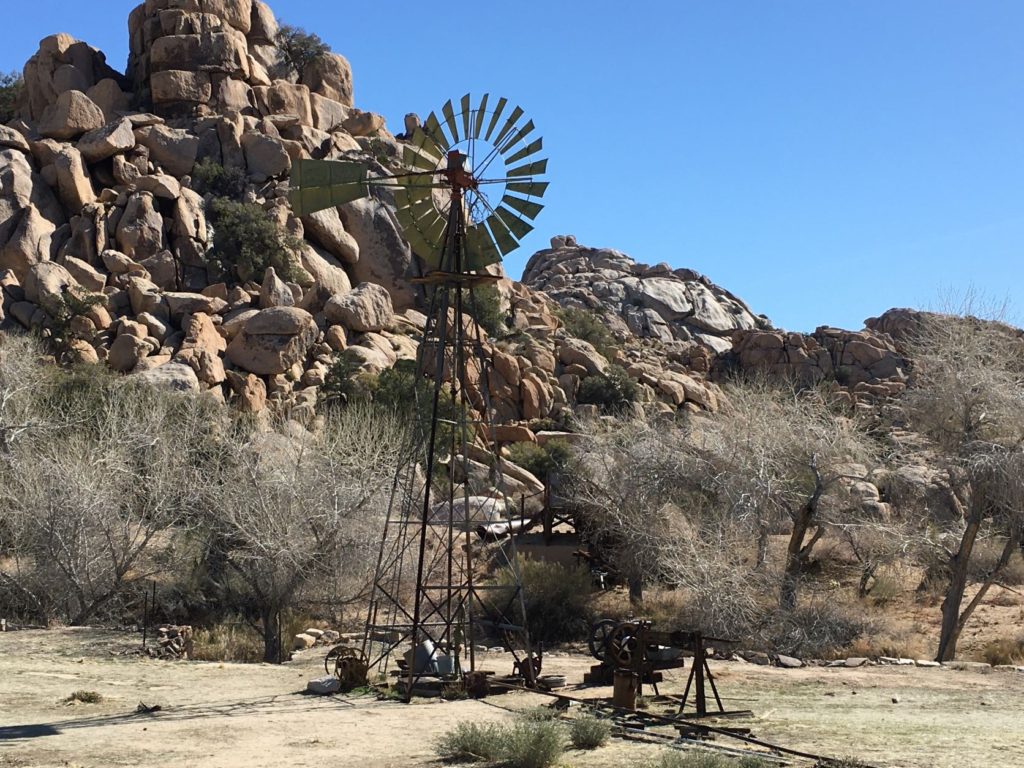
Don’t miss the Key’s Ranch tour. This is something that you need to sign up for in advance on recreation.gov. This is a 90-minute tour of a preserved old west ranch. You’ll see the house, workshop, school room and store along with the many vehicles and implements from that era. This is a walking tour narrated by a knowledgeable park ranger. I found the history and stories fascinating and you might too.
Beautiful Campgrounds
The campgrounds at Joshua Tree National Park are stunning in an otherworldly way. In some campgrounds, you can find a campsite that is surrounded by rock formations that have been formed over centuries. At most campgrounds, the sites are generously spaced and you’ll have privacy from your neighbors. While there are no hookups and any campground, every site has a fire ring, a metal barbecue and a picnic table. All sites have a vault or flush toilet. There are no showers anywhere inside the park.
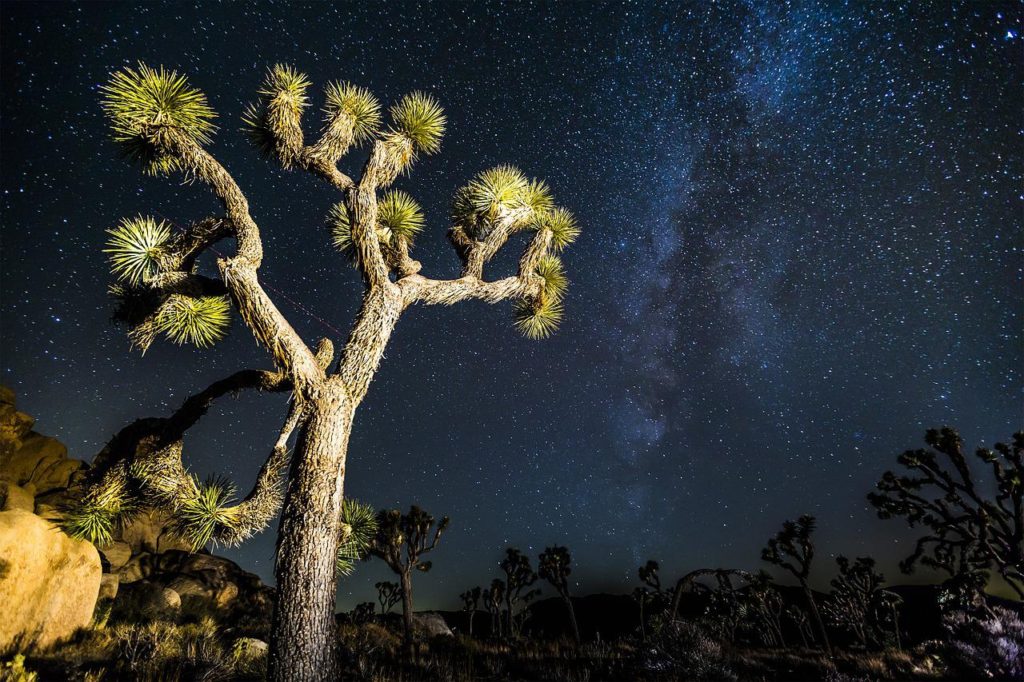
Joshua Tree boasts premiere dark skies where you can view the heavens with unfettered access right from your campsite. Since the park is located between 3000-5000 feet of elevation, and is away from major cities, it features a sky free of light pollution and is listed as a certified International Dark Sky Park. Bring your telescope or use a free app like Night Sky to see which stars and constellations you are viewing.
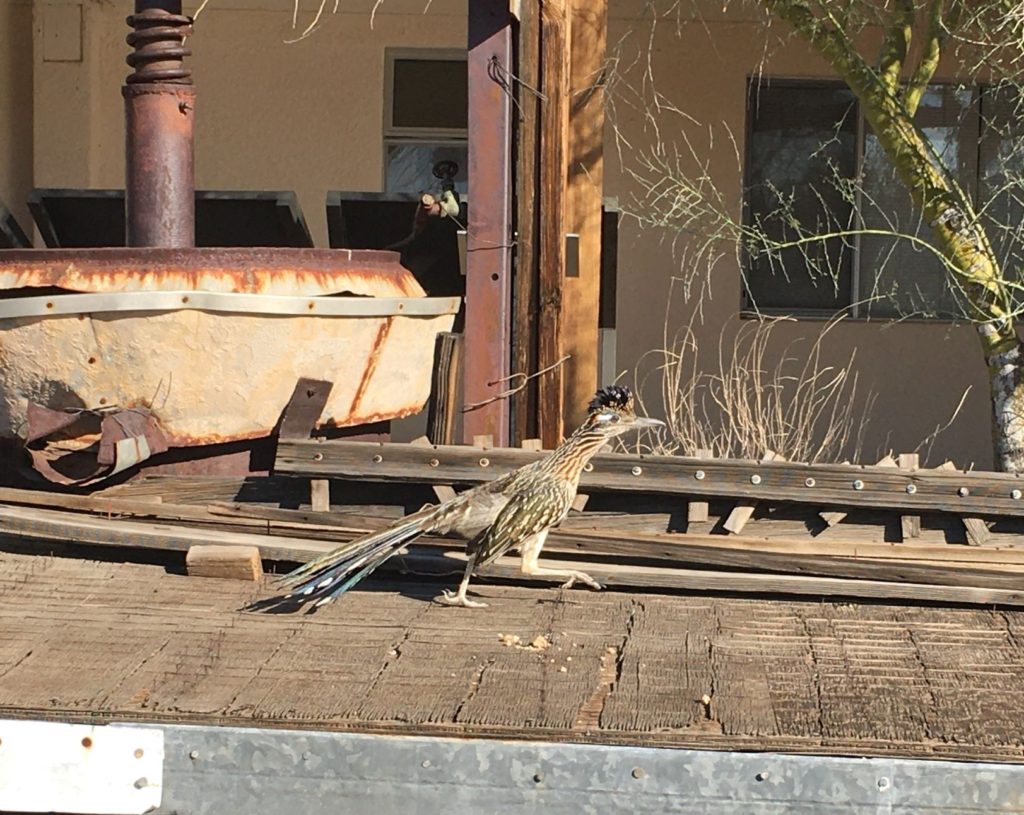
If you’re lucky, you may see some of the desert animal species right from your campsite. We never did see any coyotes, but we sure did hear them at night from our campsite. It’s an eerie feeling to hear a coyote at night, but they usually aren’t any threat to people. You are, however, likely to see pocket mice and kangaroo rats at or near the campsite. California ground squirrels and white-tailed antelope squirrels are also common near campsites, along with jackrabbits and hares. At dusk, you may see bats as a foreground to your night sky viewing. We were fortunate enough to see a roadrunner at one of the visitor centers.
Find out which campground was our favorite.
Inexpensive Camping
If you are looking for an inexpensive place to camp, Joshua Tree National Park fits the bill. There are eight campgrounds and 500 campsites, each ranging from $15-$25 per night, fitting most camping budgets. Campgrounds without running water are on the less expensive side at $15 per night. The more expensive sites have water and flush toilets available. Along with your camping fee, you’ll still have to pay the entrance fee.
Like I mentioned, most campgrounds are pretty bare-bones, but they are clean and level with a good amount of space for tents. It’s important to know your campground amenities. It’s imperative to bring water if your chosen campground does not have it.
Most Campgrounds are Reservable
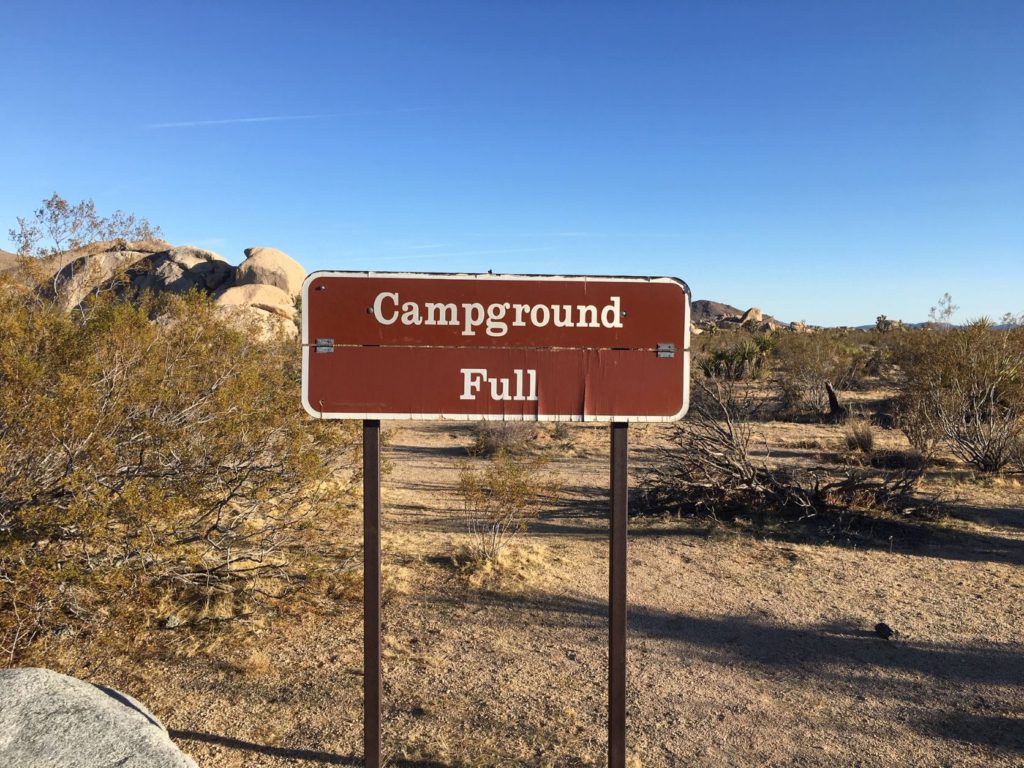
Of the eight campgrounds, five can be reserved. The other two campgrounds are first-come, first-served. Campsites in these five campgrounds can be reserved on recreation.gov. If you type in, “Joshua Tree,” the site will give you a map that shows the locations of all the campgrounds in the park. Click on a campground and you’ll get detailed information and maps showing individual campsites. If you want to know what a campsite looks like, check out campsitephotos.com. Some campgrounds are better than others and some campsites are really astounding, whereas others are just so-so. If you are planning to go on a weekend or holiday, it’s important to reserve a site. During the week, you’re more likely to find a campsite at a first-come, first-served campground, especially if you arrive before noon. Sometimes the campground full signs are not always accurate, so it’s worth driving through to check for open sites.
Do you want to know which campground is the best?
Easy Access to Attractions
Most attractions are central to the park, although there is quite a bit of drive time between some attractions. Camping inside the park gives you quicker access to park attractions. If you stay at White Tank campground, you’ll have walking access to Arch Rock and Indian cove campground is close to Wonderland of Rocks. Skull Rock is very close to Jumbo Rocks campground. Many other attractions can be accessed by a short(ish) drive.
Helpful Rangers
When I read comments about this park, many positive comments speak to how helpful the rangers are. We experienced this as well. Rangers were knowledgeable about campgrounds, attractions and tours. Our primary experience was with the rangers at the visitor center, but others have mentioned that the rangers at the campgrounds are helpful as well. Park rangers drive through campgrounds often, giving a feeling of security.
No Waiting In Line to Enter
If you camp inside the park, you won’t need to wait in line each day to enter. In season, this is a very popular park.
The park pass costs $30.00 and is valid for 7 days. Passes can be purchased online from recreation.gov or at the Entrance Stations or Visitor Center. If you plan to travel to several national parks in a year, pick up the America the Beautiful annual pass for $80.00. The America the Beautiful annual pass can be pass purchased at the Entrance Stations or Visitor Center.
Conclusion
Joshua Tree National Park is a great place to camp with many nearby attractions. Make memories with the people you love; camp at Joshua Tree National Park.
